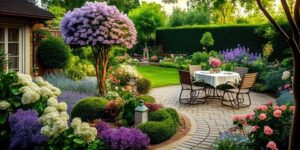Moving to a new home can provide many benefits such as upgraded living spaces that promote comfort and wellness. However, a move can also mean tedious tasks like packing and transporting belongings to the new location.

Movers Meridian ID are experts at packing and can do it in a fraction of the time you would spend on your own. They also supply moving materials including furniture blankets for additional protection.
Professional packers are experts and can get your belongings boxed up much more quickly and efficiently than you could if you were to do it yourself. They are also able to package items in such a way that they stay safe during transit.
On packing day, your movers will arrive at your home with the necessary materials and equipment, complete a thorough walk-through of your home, and begin working. They’ll start with less-used rooms and move to more-used rooms, taking care to wrap and protect fragile items. They’ll label each box according to its contents and destination room, and will typically use high-quality moving boxes, specialized bubble wrap, foam sheets, and sturdy wrapping paper. Some companies even offer custom crating for particularly valuable or delicate items.
It’s tempting to hover around your packers and second-guess their work, but it is important that you leave them alone. This is their job, and if you slow them down by constantly asking questions, it will end up costing you more money. Plus, your movers will probably be tired by the end of the day, so it’s best to give them space and let them do their work without distraction.
Depending on the type of move you’re doing, there may be some items that your movers don’t want to or aren’t allowed to pack for you. This includes anything hazardous, such as acids, ammonia, bleach, firearms, fireworks, fuels (gasoline, kerosene, propane), cleaning solvents, corrosives, darkroom chemicals, and batteries. Perishable foods are also off limits, as are live plants and anything refrigerated (to prevent spoilage or attract pests).
On the other hand, if there’s a specific item you really need, let your movers know ahead of time and they will likely be happy to accommodate you. You can even pay a little extra for a full-service move, where movers will not only pack your belongings but also unpack them at your new home. This service is perfect for those who are on a tight timeline or simply don’t want to deal with the hassle of moving themselves.
They Drive
When a shipment is loaded, it’s time to hit the road. Movers are highly skilled at all things related to transportation. They know how to stack items on a truck so that they are secure and safe during the ride. They also understand how to minimize space for maximum efficiency. They may even offer other logistical services, such as custom crating and climate-controlled storage facilities.
In a typical day, movers might work between 8-12 hours. The movers may take breaks for lunch or to go to the restroom. They might spend a few minutes checking their inventory before starting work on the next item in the truck. During the day, they might also be asked to help with unloading and/or rearrangement of items at their destination.
Mover crews are typically limited to 500 miles or 12 hours per day. Freight companies work in a relay system, so drivers can exchange trucks to keep things moving as long as there is a driver available.
Kids and pets don’t always mix well with a team of movers, so make sure to arrange for off-site childcare if possible. Kids should be supervised and kept away from the action, and pets should be left with a trusted friend or at the veterinarian. Don’t forget to feed the movers (no more than four guys–they get in each other’s way and can damage things) and provide beverages, snacks, and water.
They Insure
When hiring movers, it’s important to look for a company with the correct insurance. You should ask your mover for a copy of their insurance policy and check the coverage to ensure you have the right protection. Typically, movers will include their insurance in the cost of the move. If they don’t, you should consider a more comprehensive insurance option to provide additional coverage for your belongings. Insurance policies for movers vary, but they should cover items from your current home to your new location, white-glove items and furniture. The insurance should also include auto liability and workers’ compensation.
Some movers offer limited liability protection or full value protection, which covers your belongings up to 100 percent of their actual value. This insurance is an extra charge, and the exact amount varies by moving company. It’s best to speak with your moving company about the details of their insurance before you sign a contract.
Many movers also offer storage services and other add-ons to make the moving process easier for their customers. These extras can include custom crating, packing materials, storage facilities, and specialized handling of high-value electronics or medical equipment. Some companies may even offer junk removal and basic cleaning.
Before you hire a mover, be sure to check their DOT number and verify that they are licensed by the Federal Motor Carrier Safety Administration. You can do this online or by contacting the mover directly. Additionally, you should always get a written estimate and contract before agreeing to any services.
Depending on state regulations, movers are required to provide minimum liability coverage or full valuation for their moves. Some states require this to be included in your non-binding estimate, while others will have it as an add-on to the cost of your move.
When evaluating the costs of your move, be sure to compare the value of your belongings against the cost of replacement or repair. Also, keep in mind that you only have nine months to file a claim for loss or damage. By reporting any damage promptly, you can help prevent unnecessary stress and financial hardship.
They Unpack
Depending on the type of service you choose, some movers will not only pack your belongings but unpack them at the new destination as well. This saves you the time and effort of arranging and unpacking everything yourself, plus it eliminates the risk of breaking or losing valuable items during the process. This service usually costs a little more, but it’s worth the extra expense if you don’t want to deal with all the moving-in details yourself.
Full service movers will provide all packing materials necessary for the job, so you don’t have to worry about running out of boxes or tape. They also have special equipment like dollies, furniture blankets, and straps to help them safely and efficiently transport your items to and from the truck. They will also provide specialized packaging for items like glass and artwork, as well as furniture disassembly and reassembly.
On the day of your move, a crew will arrive with a large truck and a team of trained, professional packers. They will work efficiently to get all your belongings packed and loaded in a fraction of the time it would take you. They will mark each box with the room it belongs in and will even wrap fragile items with a blanket or Styrofoam peanuts. They will also crate and shrink-wrap any large or awkward items that need additional protection.
Once at the destination, movers will unpack your boxes and arrange your belongings according to your instructions. They will also remove all packing materials and trash, and cart away any empty boxes or packaging you don’t need.
If you have hired a full service mover, they will take care of everything from a basic local move to an entire household or business relocation. They will also offer additional services such as debris removal, cleaning and disinfecting, and connecting or relocating appliances. Some movers will even provide specialized handling and storage for valuable or delicate items such as electronics or medical equipment. They may also offer custom crating and climate-controlled storage facilities. These perks make the additional cost of full-service moving worth it for many people.

